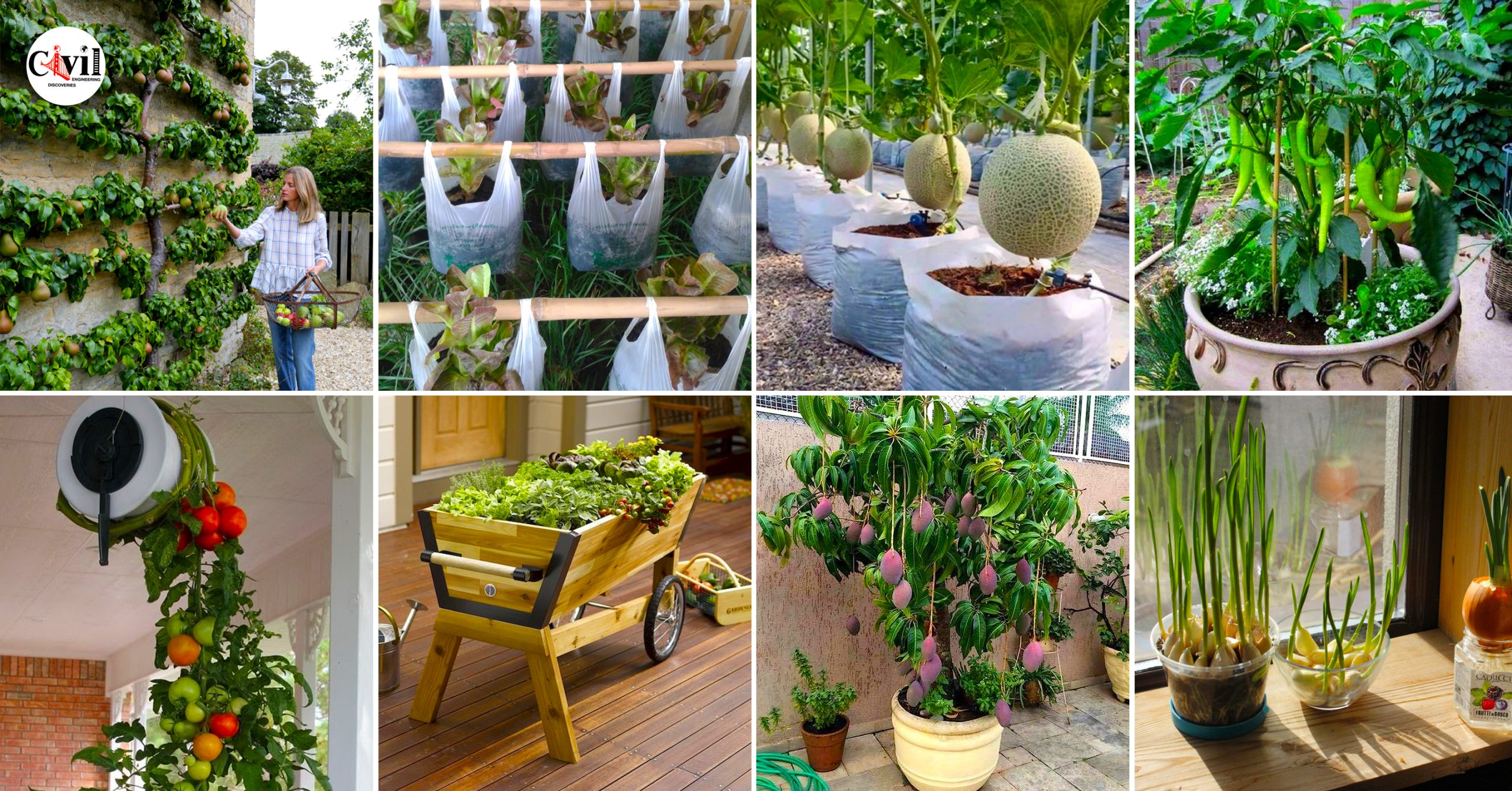Introduction
Growing vegetables at home has numerous benefits. You have control over the growing process, ensuring that no harmful chemicals or pesticides are used. Additionally, you can choose from a wide variety of vegetables, including heirlooms and rare varieties that may not be readily available in stores. Homegrown vegetables are also fresher, tastier, and more nutritious, as they are harvested at their peak.
1. Choosing the Right Location
The first step in growing fresh and healthy vegetables at home is selecting the right location for your garden. Choose an area that receives ample sunlight, preferably 6 to 8 hours a day. Ensure that the spot has good drainage to prevent waterlogging, as excessive moisture can lead to root rot and other diseases. If you have limited space, consider using containers or vertical gardening techniques to maximize your growing area.
2. Selecting the Vegetables to Grow
When deciding which vegetables to grow, consider your local climate and growing season. Choose vegetables that are well-suited to your region and can thrive in the available space and conditions. Some easy-to-grow vegetables for beginners include tomatoes, lettuce, cucumbers, peppers, and herbs like basil and mint. Research the specific requirements of each vegetable, such as soil type, water needs, and temperature preferences.
3. Preparing the Soil
Good soil is the foundation for healthy plant growth. Prepare the soil by removing any weeds, rocks, or debris. Loosen the soil with a garden fork or tiller, ensuring good aeration and drainage. Add organic matter such as compost or well-rotted manure to enrich the soil and improve its fertility. Conduct a soil test to determine its pH level and make any necessary amendments to achieve the ideal range for the vegetables you plan to grow.
4. Starting from Seeds or Seedlings
You have two options for starting your vegetable garden: sowing seeds directly into the soil or starting with seedlings. Sowing seeds allows you to choose from a wider variety, but it requires more time and effort. Seedlings, on the other hand, provide a head start and are less susceptible to damage from pests or adverse weather conditions. Follow the instructions on the seed packets or consult a gardening guide for specific guidance on planting depth, spacing, and care.
5. Planting and Transplanting
Before planting or transplanting your vegetables, create a planting plan to optimize space and ensure proper growth. Pay attention to the recommended spacing between plants to avoid overcrowding, which can lead to competition for nutrients and an increased risk of disease. Follow the instructions for each vegetable regarding planting depth, watering, and fertilization. When transplanting seedlings, handle them gently to minimize root disturbance.
6. Watering and Irrigation
Watering is a crucial aspect of vegetable gardening. Provide your plants with consistent moisture, aiming for about an inch of water per week, either through rainfall or irrigation. Water deeply and avoid frequent shallow watering, as it encourages shallow root growth. Use a watering can or a drip irrigation system to deliver water directly to the plant’s root zone, minimizing water wastage and keeping the foliage dry to prevent diseases.
7. Providing Adequate Sunlight
Most vegetables require ample sunlight for photosynthesis and healthy growth. Ensure that your garden receives at least 6 to 8 hours of direct sunlight daily. If your garden is shaded, consider growing vegetables that tolerate partial shade, such as leafy greens or root crops. You can also use reflective materials or strategically position reflective surfaces to maximize the sunlight available to your plants.
8. Nutrient Management
To support healthy vegetable growth, it’s essential to provide adequate nutrients. Incorporate organic matter into the soil before planting, and consider using organic fertilizers or compost tea during the growing season. Monitor your plants for signs of nutrient deficiencies, such as yellowing leaves or stunted growth, and make adjustments accordingly. Remember to follow the recommended application rates to avoid overfertilization, which can harm the plants.
9. Pest and Disease Control
Garden pests and diseases can threaten the health of your vegetable plants. Employ integrated pest management strategies, including cultural, mechanical, biological, and chemical controls. Encourage beneficial insects like ladybugs and lacewings to control pests naturally. Regularly inspect your plants for signs of pests or diseases, and take appropriate action, such as handpicking pests or applying organic insecticides when necessary.
10. Weed Management
Weeds compete with vegetables for resources which can hinder their growth. Practice regular weeding to keep your garden free from unwanted plants. Use mulch, such as straw or wood chips, to suppress weed growth and conserve soil moisture. When hand weeding, ensure that you remove the entire weed, including the roots, to prevent regrowth. Be cautious when using herbicides, as they can harm your vegetable plants if not used correctly.
11. Harvesting and Storing
One of the most satisfying aspects of growing your own vegetables is the joy of harvesting. Each vegetable has its specific harvest time, so pay attention to the maturity indicators, such as color, size, or texture. Harvest your vegetables in the morning when they are crisp and have higher water content. Store harvested vegetables properly to maintain their freshness and flavor, using techniques like refrigeration, blanching, freezing, or canning.
Tips for Success
- Regularly monitor your garden for pests, diseases, and nutrient deficiencies.
- Rotate your crops each year to prevent the buildup of pests and diseases.
- Practice companion planting to maximize space and enhance pest control.
- Mulch your garden beds to suppress weeds and retain soil moisture.
- Keep a gardening journal to track your progress, successes, and failures.






































